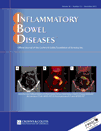Measurement of colonic mucosal concentrations of 5-aminosalicylic acid is useful for estimating its therapeutic efficacy in distal ulcerative colitis: Comparison of orally administered mesalamine and sulfasalazine
Abstract
Objectives
Oral 5-aminosalicylic acid (5-ASA) preparations have been used frequently in the treatment of ulcerative colitis. However, there have been few reports investigating the relationship between colonic mucosal concentrations of 5-ASA and its clinical efficacy when oral sulfasalazine or 5-ASA compounds were administered. The aim of this study is to compare the mucosal concentrations of 5-ASA ensured by sulfasalazine or mesalamine, and to define the clinical significance of the measurement of 5-ASA concentrations in the treatment of distal ulcerative colitis.
Materials and Methods
Biopsies were taken from the rectum and sigmoid colon of the oral sulfasalazine group (n = 13) and the slow-release 5-ASA (mesalamine) group with (n = 5) or without (n = 11) rectal administration of 5-ASA. High-pressure liquid chromatography was used to measure the tissue concentrations of 5-ASA and its metabolites. We compared the 5-ASA concentrations of the sulfasalazine group with the mesalamine group. Furthermore, we analyzed the relationship between tissue 5-ASA concentrations and the Disease Activity Index (DAI).
Results
The concentrations of 5-ASA and acetyl-5-ASA in the sulfasalazine group were higher than those in the group taking oral mesalamine alone (p < 0.01). The concentration of 5-ASA was much higher in the patients who received oral and rectal mesalamine in an enema than in the patients who had oral mesalamine alone. There was a significant inverse correlation between the DAI and concentrations of 5-ASA in the rectum (r = 0.712, p < 0.001).
Conclusions
We demonstrated that the colonic mucosal concentration of 5-ASA was significantly higher in the sulfasalazine group than in the mesalamine group. Furthermore, the concentrations of mucosal 5-ASA may be a good marker for the estimation of its efficacy in the treatment of ulcerative colitis.




